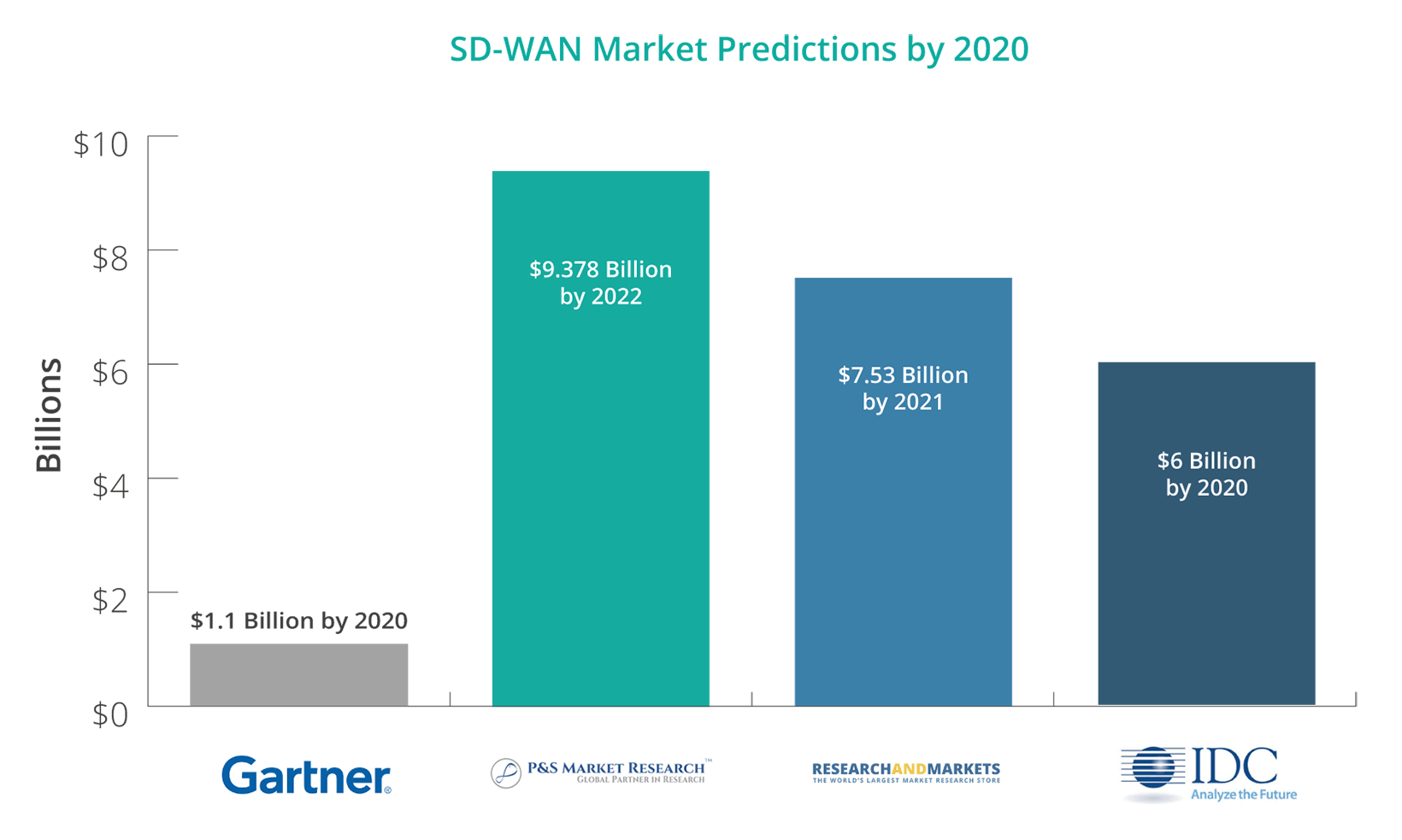SD-WAN Basics: What You Need to Know About the Growing Market

What are the top concerns for most organization leaders? Time and Money.
However, you might not realize how much your network can impact both of those things.
Enterprise wide-area networks (WAN) are the digital foundation of every organization. If you choose the wrong solution for your company’s needs, that foundation crumbles – meaning that it takes longer for your employees to do their work and your company loses valuable revenue in the process.
Right now, companies and other organizations around the world are grappling with whether or not to upgrade their networks and take the plunge into software-defined wide-area networks (SD-WAN). If that’s you, then you’ve come to the right place.
Understanding what SD-WAN is and how your organization can use it will help you decide which type of network is right for your needs. In this post, we’ll introduce you to SD-WAN and help you understand its role in the marketplace.
Understanding SD-WAN
SD-WAN offers an entirely new way of managing a network across multiple locations. It is a way to move an organization’s network from hardware to software and represents a shift away from data centers and server rooms toward cloud and SaaS applications.
They are not dependent on hardware and can dynamically load balance across multiple links to avoid the MPLS backhauling that still plagues many global enterprise networks today.
This functionality allows organizations to replace MPLS with an option that can save money and increase employee productivity. Sound too good to be true? It’s not.
SD-WAN provides a way to improve network performance and connect employees around the world while keeping data safe, and is easily scaled as your company grows.
However, SD-WAN isn’t, in most cases, as simple as just a software-defined on-ramp to a private network. It comprises both hardware and software, and the methods in which it is delivered and by which it performs differ with each provider.
How “Big” is SD-WAN?
Several major organizations have attempted to capture SD-WAN market’s size and come up with different results in the process.
According to a few key estimates, here’s the estimated value of the SD-WAN market by 2020:
- Gartner: $1.1 billion
- P&S Market Research: $9.3 billion
- Research and Markets: $7.5 billion
- IDC: $6 billion

No matter which number turns out to be most accurate, all of these figures represent a clear trend toward SD-WAN growth over the next three years. But, not all SD-WAN options are created equal.
Aryaka is a “Global SD-WAN” provider, meaning that we operate a truly global private network. This is unique in the SD-WAN landscape today, and is what allows for reliably connecting employees around the world to each other, centralized data centers, or cloud services.
We are committed to providing all of the resources you need to evaluate SD-WAN options for your organization. For more information, download our white paper on what IT leaders should know about SD-WAN.







